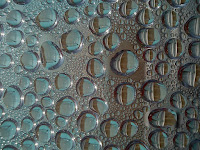While it might not sound like a big deal, excess condensation in your ductwork can be a sign of more serious problems within your HVAC system. Often homeowners are completely unaware that there is trouble until a more serious issue occurs.
What is Condensation?
Condensation occurs when water vapor in the air condenses into liquid. The colder the air becomes, the more likely the air will condense into water. Generally, this problem is associated with warm humid air as it comes into contact with a much colder temperature, such as the surface of your air ducts. The cold surface chills the air and causes a rapid drop in temperature. When the temperature dips below the air’s dew point, water forms. This process can be seen if you observe how air reacts to the surface of a glass filled with an icy cold beverage.
Why is this a Problem for Ductwork?
When the water forms on the cold surface of the ducts, can start to drip. Because the ducts are normally located behind walls or in ceilings, the excess build-up of water can have a big impact on the interior surfaces, causing mold and mildew to form. It can also compress insulation in the wall and reduce the energy efficiency. And, it can rot the drywall, ruin woodwork and other structures within the interior of your walls.
What Causes Condensation in Air Ducts?
Typically, moisture within HVAC ducts is an issue during the summer months in areas like the Ozarks, that see a great deal of heat and humidity. The cold air from your air conditioning creates the right climate for warmer humidified air to condense into water droplets within your air ducts. Having inadequate insulation around your ducts is a common way that condensation forms. Insulation is designed to hold heat in or keep cold out. If your ducts are properly insulated, condensation is unable to form because the warm air does not come into contact with the cold surface of the air ducts.
If you are concerned that you have condensation in your ducts, it is best to leave the job to a professional. Contact the team at Wheeler Heating and Air Conditioning to analyze the moisture content in your ducts.

